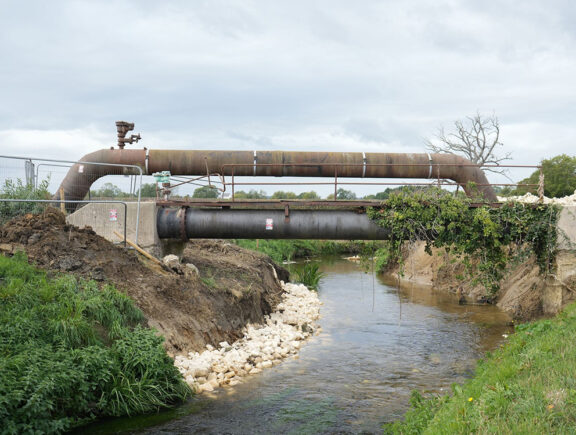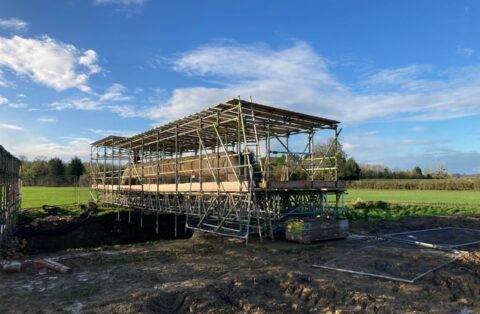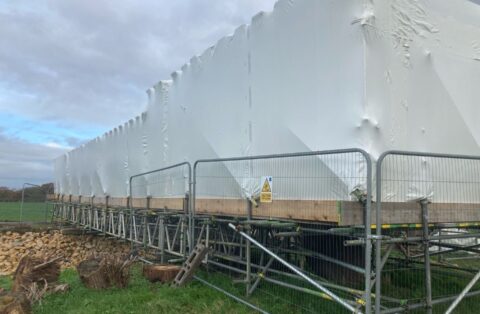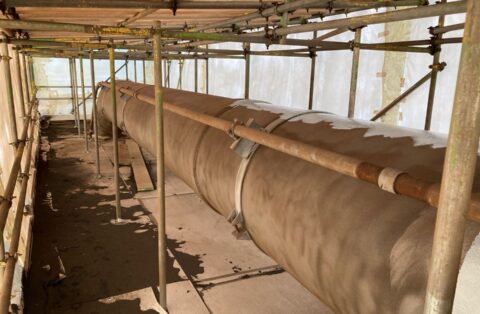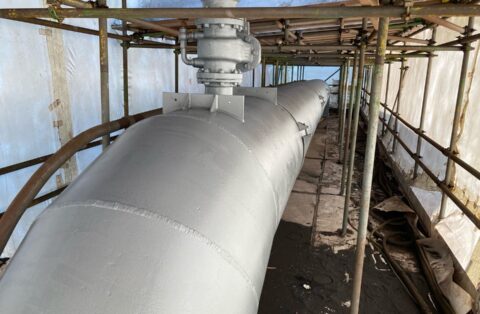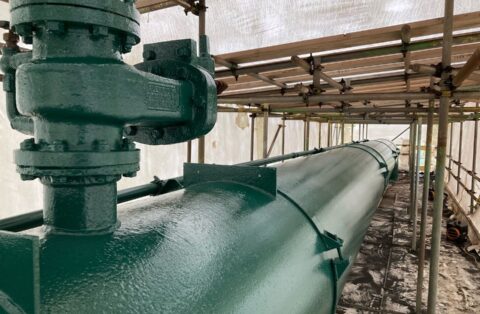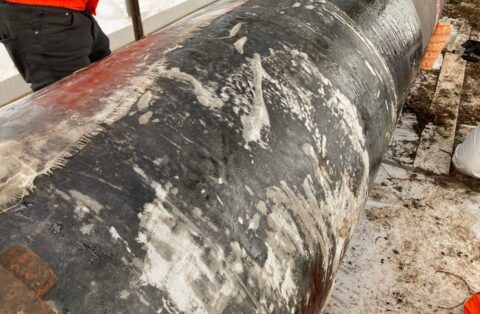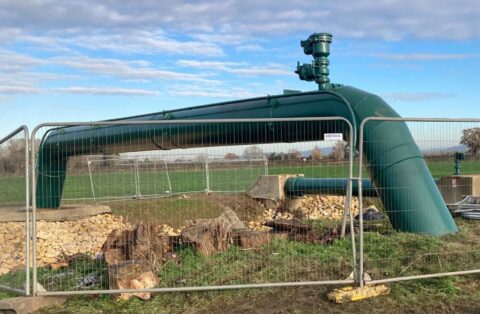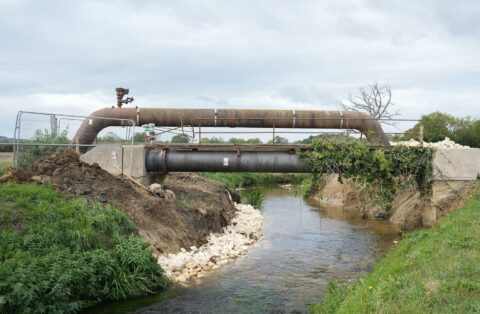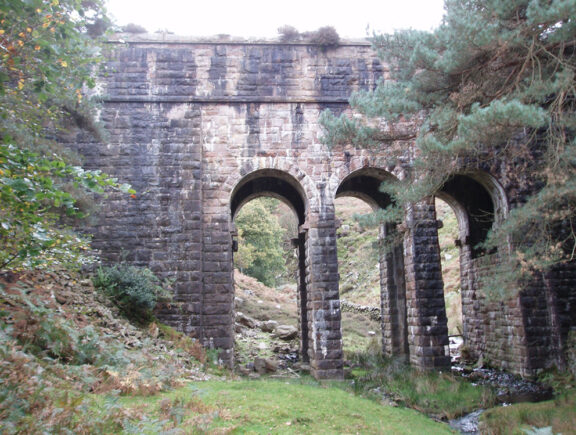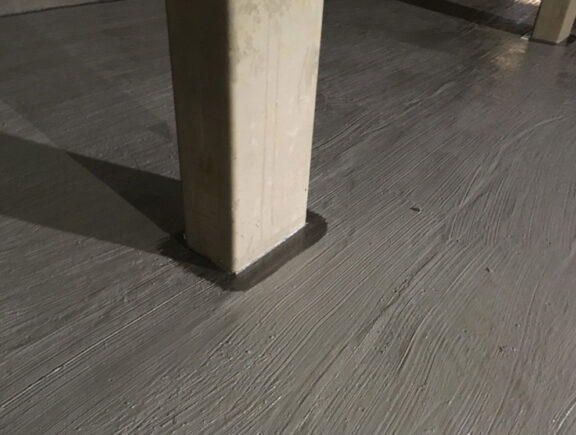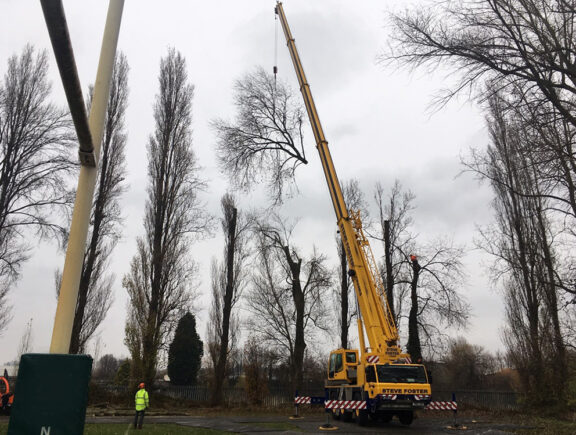The main works began by installing a bespoke, fully-wrapped scaffolding system around the assets to protect the surrounding environment and shelter the pipes during coating operations. Due to the nature of the scaffolding, an emergency striking plan was put in place in case river levels rose or if flood warnings were issued.
The coating system had failed on both pipes and therefore the scope of works was to conduct a full grit blast on both assets and recoat them with a protective coating system to ensure their long-term durability. While this was possible for one of the pipes, an initial inspection revealed asbestos on the second bridge. Considering both safety and overall pipe condition, Stonbury agreed with the client to remove the grit blasting from the scope for this asset.
Upon the client’s request, Stonbury provided an alternative, shorter-term waterproof solution to protect the pipe for a maximum of five years, which would see it through to the end of its serviceable lifespan. Plans have been made to replace the pipe within three years.
The new solution involved wrapping the pipe without disturbing the asbestos, which was carried out under the advice of a specialist; appropriately marking the pipework; and updating the Health and Safety file to prevent the asbestos from being disturbed by accident in the future.
Once both pipe bridges were secure, concrete repairs and strengthening works were carried out to eroded supporting concrete thrust blocks. Replacement access gantry, steps and fencing were also installed to assist future operations and protect the public from unauthorised access.
